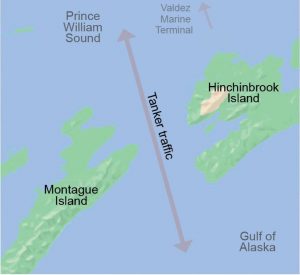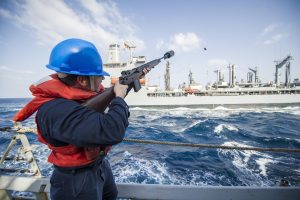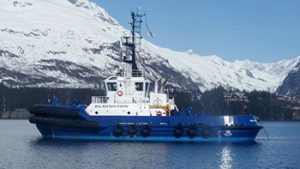When a ship is disabled at sea, an appropriate rescue vessel must respond quickly to prevent an accident. Towing can be dangerous, especially in rough weather, because the rescue tug must get close to connect a towline.
Challenging environment in Alaska

Hinchinbrook Entrance is a narrow waterway that connects Prince William Sound to the Gulf of Alaska. The weather and sailing conditions in the gulf can change rapidly and are often severe.
Tankers carrying millions of gallons of oil regularly pass through the Entrance. Alyeska’s Ship Escort/Response Vessel System must have a tug stationed at the Entrance when laden tankers travel through Prince William Sound.


